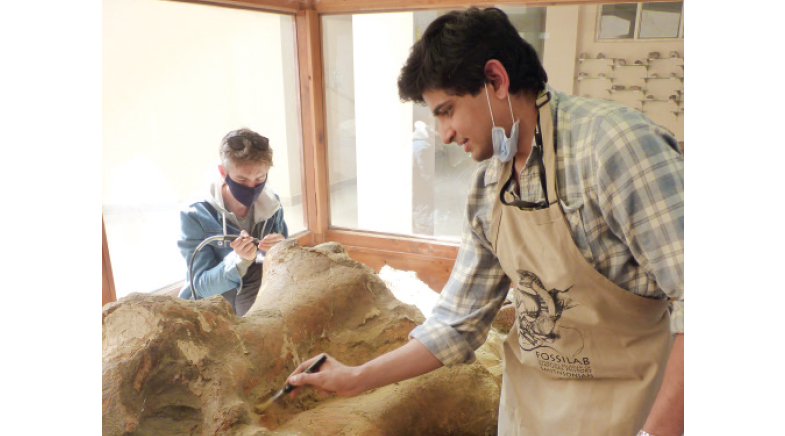Scientists are tapping energy from thin air
-
- from Shaastra :: vol 03 issue 08 :: Sep 2024

Researchers are plucking out energy from the air to charge devices.
With the global reliance on the Internet of Things (IoT) rising over the past decade, researcher Dinesh Kumar at the Indian Institute of Technology (IIT) Madras was looking for sustainable and efficient ways to power sensors. With a background in manufacturing, he wanted to produce sensors that could harvest energy flowing around them.
After initial experiments with piezoelectric materials that could convert stress or strain into electrical energy, he moved to frictional force. Kumar wanted to tap into the electrical energy generated when two materials came in contact in a phenomenon called the triboelectric effect. For centuries, this energy was little more than a popular party trick for children: rubbing wool against one's head to watch strands of hair rising against gravity.
In 2012, however, Zhong Lin Wang and his team at the Georgia Institute of Technology discovered how to harvest this energy through a triboelectric nanogenerator (TENG) to power small devices. In the decade that followed, researchers experimented with the device materials, composition and design to make it commercially viable. Theoretically, a TENG device woven into a jogger's clothes could use the body motions to power other wearables such as a smartwatch. "Or, on a larger scale, you could power traffic signals if you harvest the triboelectric energy between cars and roads," says Kumar.
Excited by its potential, Kumar worked under two professors from IIT Madras — N. Arunachalam from the Department of Mechanical Engineering and R. Jayaganthan from the Department of Engineering Design. They 3D-printed a device consisting of two opposing sheets of material, 5 millimetres apart, which, when brought into contact, produced electricity.
Kumar's collaboration with Arunachalam also resulted in the possibility of a new application. "We could use TENG devices to monitor the vibrations on machining tools," he says. This would help maintain tools and prevent breakdowns. In healthcare, TENGs could power smaller monitoring devices, while being charged by vibrations from these devices when running – "like a closed loop system".
But more research is needed, as an IoT application requires continuous electric power supply, points out D.S. Shankar Rao, formerly with the Centre for Nano and Soft Matter Sciences, Bengaluru. "The TENG device requires proper storage using an appropriate selection of capacitance and resistance combination circuits."
PAST ISSUES - Free to Read


Have a
story idea?
Tell us.
Do you have a recent research paper or an idea for a science/technology-themed article that you'd like to tell us about?
GET IN TOUCH














